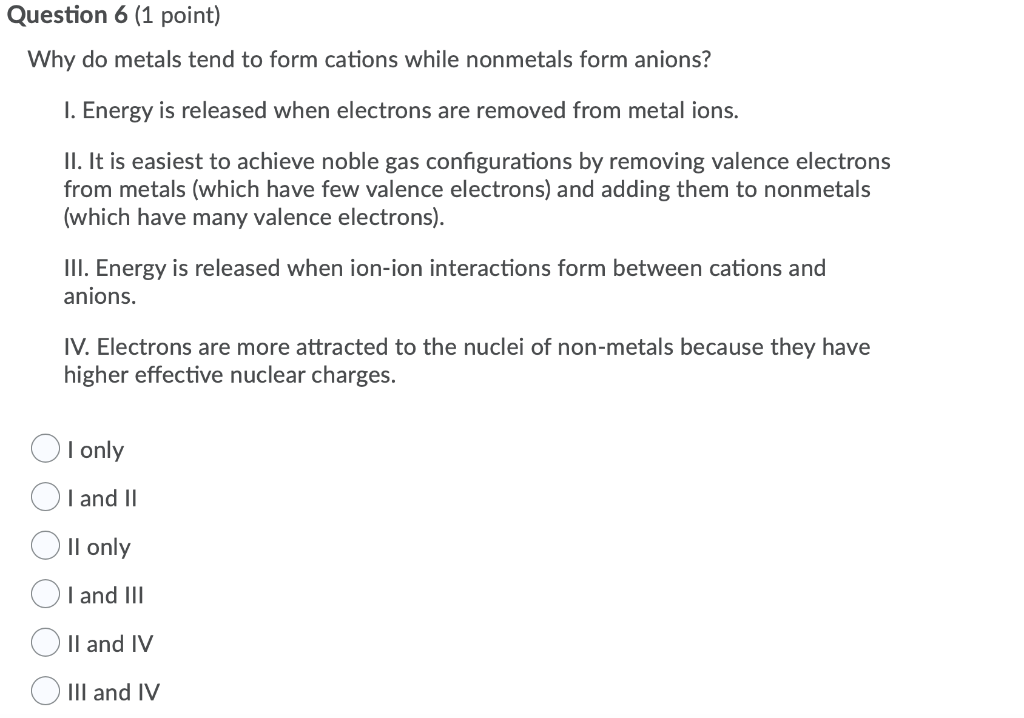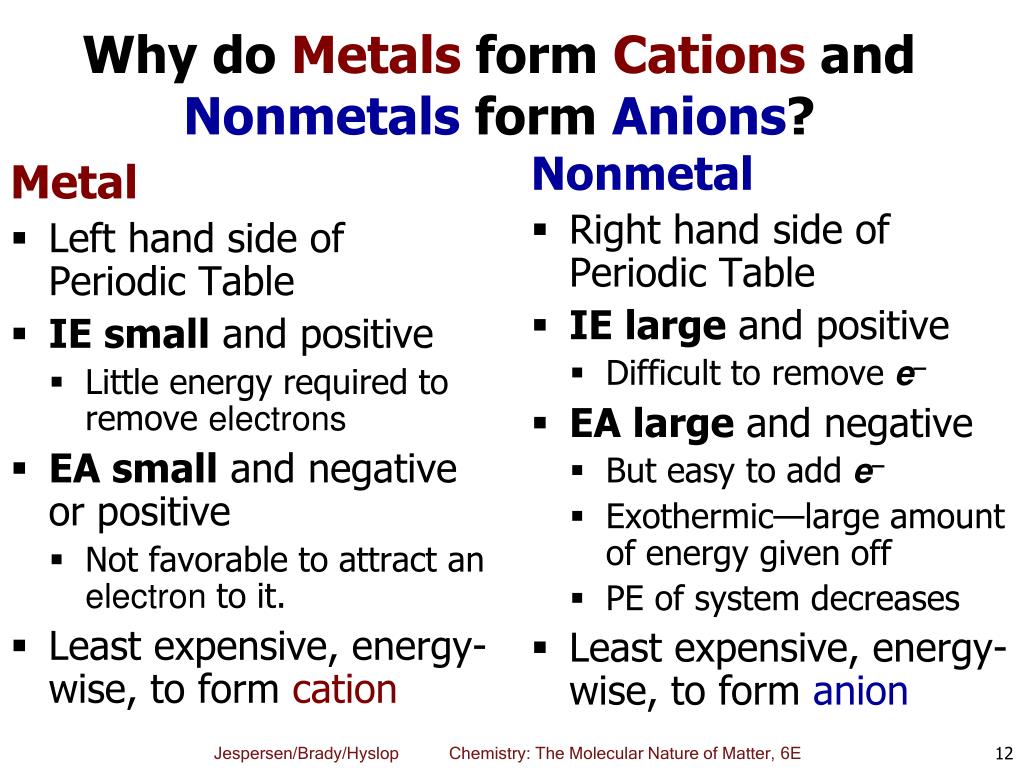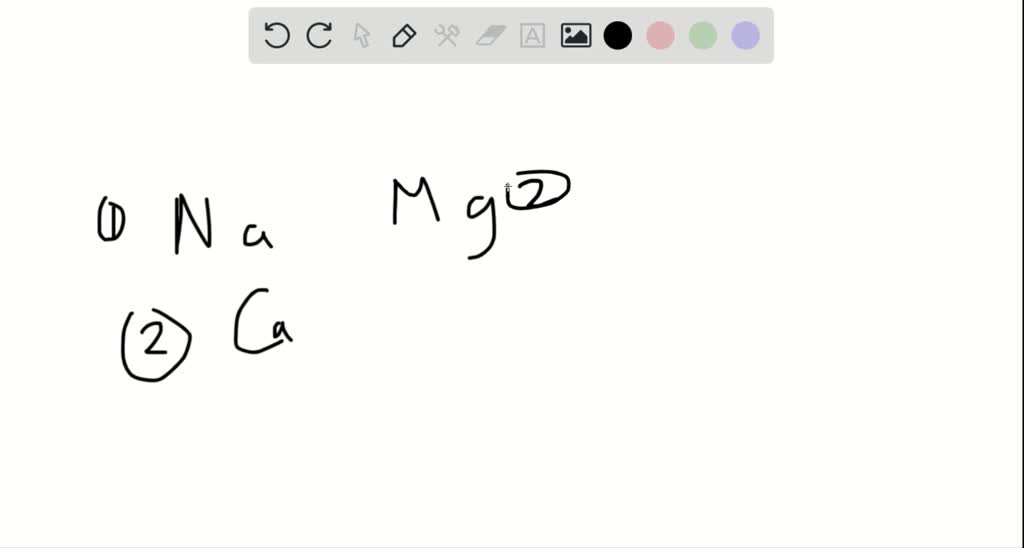Why Do Metals Form Cations
Why Do Metals Form Cations - Metals are prone to losing electrons as a result of the arrangement of. First, each element that forms a cation is a metal, except for one (hydrogen), while each element that forms an anion is a nonmetal. Metals form positive ions because they tend to lose electrons during chemical reactions, resulting in a positive charge. Cations are formed when a neutral atom loses an electron. In more detail, the formation of.
Metals are prone to losing electrons as a result of the arrangement of. Cations are formed when a neutral atom loses an electron. In more detail, the formation of. Metals form positive ions because they tend to lose electrons during chemical reactions, resulting in a positive charge. First, each element that forms a cation is a metal, except for one (hydrogen), while each element that forms an anion is a nonmetal.
Cations are formed when a neutral atom loses an electron. Metals form positive ions because they tend to lose electrons during chemical reactions, resulting in a positive charge. Metals are prone to losing electrons as a result of the arrangement of. In more detail, the formation of. First, each element that forms a cation is a metal, except for one (hydrogen), while each element that forms an anion is a nonmetal.
Do Metals Form Anions Or Cations
In more detail, the formation of. Metals form positive ions because they tend to lose electrons during chemical reactions, resulting in a positive charge. First, each element that forms a cation is a metal, except for one (hydrogen), while each element that forms an anion is a nonmetal. Cations are formed when a neutral atom loses an electron. Metals are.
Solved Question 6 (1 point) Why do metals tend to form
In more detail, the formation of. Metals are prone to losing electrons as a result of the arrangement of. First, each element that forms a cation is a metal, except for one (hydrogen), while each element that forms an anion is a nonmetal. Metals form positive ions because they tend to lose electrons during chemical reactions, resulting in a positive.
Which Metals Form Cations With Varying Positive Charges TerryhasYoder
Metals are prone to losing electrons as a result of the arrangement of. Metals form positive ions because they tend to lose electrons during chemical reactions, resulting in a positive charge. First, each element that forms a cation is a metal, except for one (hydrogen), while each element that forms an anion is a nonmetal. Cations are formed when a.
13 Transition Metals & Colored Complexes The!Mad!Scientist!
Metals are prone to losing electrons as a result of the arrangement of. Metals form positive ions because they tend to lose electrons during chemical reactions, resulting in a positive charge. First, each element that forms a cation is a metal, except for one (hydrogen), while each element that forms an anion is a nonmetal. Cations are formed when a.
PPT Chapter 9 The Basics of Chemical Bonding PowerPoint Presentation
Cations are formed when a neutral atom loses an electron. First, each element that forms a cation is a metal, except for one (hydrogen), while each element that forms an anion is a nonmetal. In more detail, the formation of. Metals form positive ions because they tend to lose electrons during chemical reactions, resulting in a positive charge. Metals are.
What are the properties of most metals? ppt download
Cations are formed when a neutral atom loses an electron. First, each element that forms a cation is a metal, except for one (hydrogen), while each element that forms an anion is a nonmetal. Metals form positive ions because they tend to lose electrons during chemical reactions, resulting in a positive charge. Metals are prone to losing electrons as a.
Explain why almost all metals tend to form cations. Numerade
In more detail, the formation of. Cations are formed when a neutral atom loses an electron. Metals are prone to losing electrons as a result of the arrangement of. Metals form positive ions because they tend to lose electrons during chemical reactions, resulting in a positive charge. First, each element that forms a cation is a metal, except for one.
Ionic Compounds Stone Cold Chemistry Talk
In more detail, the formation of. Metals are prone to losing electrons as a result of the arrangement of. Metals form positive ions because they tend to lose electrons during chemical reactions, resulting in a positive charge. Cations are formed when a neutral atom loses an electron. First, each element that forms a cation is a metal, except for one.
Cations and Anions Definitions, Examples, and Differences
First, each element that forms a cation is a metal, except for one (hydrogen), while each element that forms an anion is a nonmetal. Metals form positive ions because they tend to lose electrons during chemical reactions, resulting in a positive charge. Metals are prone to losing electrons as a result of the arrangement of. Cations are formed when a.
Metals Tend to Form Cations or Anions IndiahasPeck
Cations are formed when a neutral atom loses an electron. First, each element that forms a cation is a metal, except for one (hydrogen), while each element that forms an anion is a nonmetal. In more detail, the formation of. Metals are prone to losing electrons as a result of the arrangement of. Metals form positive ions because they tend.
First, Each Element That Forms A Cation Is A Metal, Except For One (Hydrogen), While Each Element That Forms An Anion Is A Nonmetal.
Cations are formed when a neutral atom loses an electron. Metals are prone to losing electrons as a result of the arrangement of. In more detail, the formation of. Metals form positive ions because they tend to lose electrons during chemical reactions, resulting in a positive charge.





.jpg)



